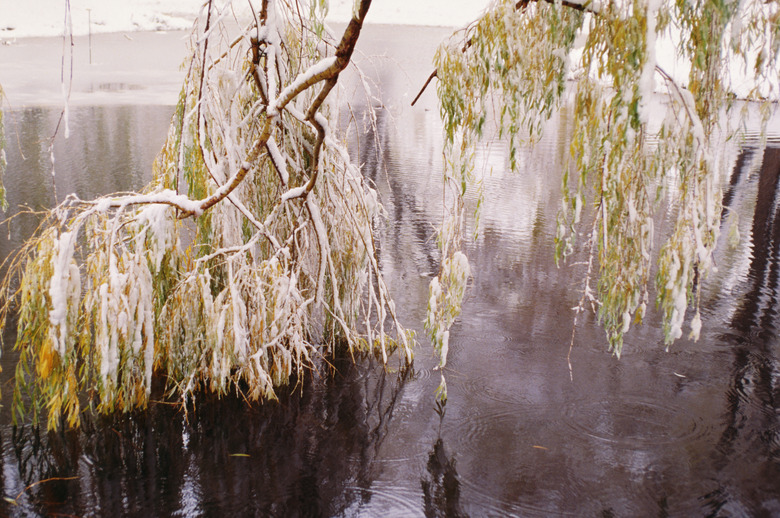What Causes Droopy Tree Limbs?
Trees use their limbs and branches to support leaves for gathering sunlight and releasing waste products. When a tree's limbs aren't as healthy and strong as they should be, they break off or lose their leaves and put stress on the tree. Drooping limbs are a sign of a variety of problems or conditions for most trees.
Growth Pattern
Some tree limbs begin to droop as the tree grows, because the species naturally grows with a drooping pattern. For example, some willow varieties feature drooping branches no matter how healthy the plant is. Oaks and other hardwoods tend to develop low-hanging drooping branches near the bottom of the trunk that may rest on the ground, says the University of Florida IFAS Extension. These branches should be trimmed off for the health of the tree.
Weight
Heavy accumulations of ice form on the tips of large tree limbs, weighing them down. Flexible trees with thinner branches and limbs droop under the extra weight. Fruit and nut tree limbs also droop and may even hit the ground when it is harvesting time, according to Plant Answers. Trimming off excess fruit lets drooping limbs rise up again and prevents broken limbs from littering the ground after a storm. Many tree varieties, like pecans, produce better quality nuts if trimmed because the tree isn't as stressed.
Insufficient Water
Tree limbs require the right amount of water to stay strong and support the weight of foliage, branches and birds' nests. Branches and limbs begin to droop and lose their strength when the tree dries out, according to Cedar Rim Nursery. Drought and the recent planting of other water-loving plants around a tree change the amount of moisture available in the soil. Supplemental watering helps drooping limbs perk back up, but you may lose some limbs if you don't catch the problem early enough.
Pests
Some insects that damage trees lead to drooping, weak branches that can't support the weight of the foliage. The bronze birch borer is the main culprit for the various birch species, says the Cornell Cooperative Extension Service. Also known as Agrilus anxius, this small beetle starts as a grub that burrows into the upper branches of a birch. The grub stops water from reaching the rest of the branch, leading to a weak and droopy limb. Other tree species aren't susceptible to this problem.
